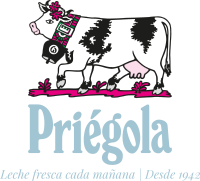Milk fermented Laban
[av_one_full first]Since times dating back to before the birth of Christ, the yogurt was already consumed in the eastern lands but to get that product to the Lebanon, were made some modifications and then happen to be known with the name of 'Laban'.
[/av_one_full]
[av_one_full first]
[av_image src='http://priegola.com/wordpress/wp-content/uploads/2012/08/laban.jpg' attachment='16017' align='center' animation='no-animation' link='lightbox' target='' styling='' caption='' font_size='' appearance=''][/av_image]
[/av_one_full]
[av_one_full first]
This food was born as a response to the needs of an eminently pastoral society that had no way to conserve milk if this was not fermented. In this way, they modified intelligently processing in such a way that possible conservation at room temperature.
The Laban is simply milk subjected to a process of fermentation by high pasteurisation. Fermentation originating lower in lactose, making more digestible milk, at a time which preserves all its nutritional properties. Recent microbiological studies of fermenters strains in the traditional Lebanese Laban, show more than ninety different strains of lactic acid, being mostly Lactobacillus bacteria delbrueckii bulgaricus subspespecie and secondly Streptococcus thermophilus, by what the researchers conclude that the Laban is fermented milk nutritional values similar to yogurt (although with specific characteristics) and yoghurt-like texture.
Benefits include a greater digestibility which no milk fermented by their reduction in lactose (could be suitable for some people with mild intolerance to lactose as an alternative to milk lactose-free) and the added benefit of each individual's own intestinal flora regulation, modulating it towards an increase of the beneficial strains to the detriment of the pathogenic , while the intestinal transit would improve, combating constipation (in this sense would increase milk tolerance in people with this problem).
The importance in the habits of the Arab culture is so marked in its consumption, that about 70% of its milk production is intended precisely to the elaboration of the Laban in the societies of the Middle East. Mostly used profusely in the Lebanese and Syrian cuisine but its dominance has extended to all those Nations of Arab influence, and therefore, all countries that have migrated these peoples, giving the option to other cultures, to know its wonderful and healthy digestive and nutritional properties.[/av_one_full]
